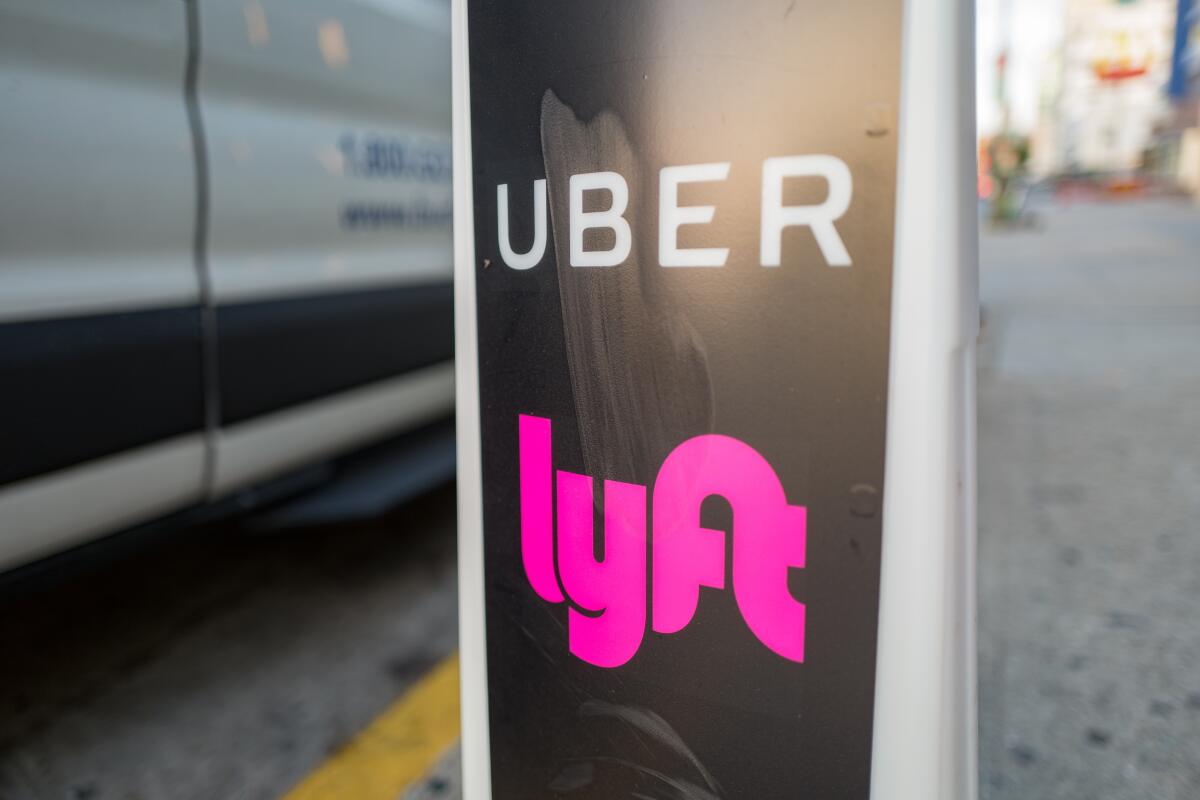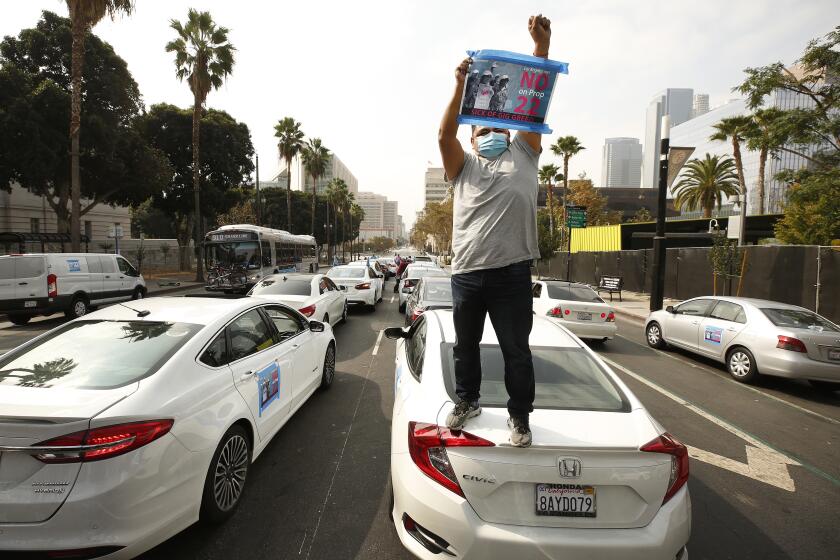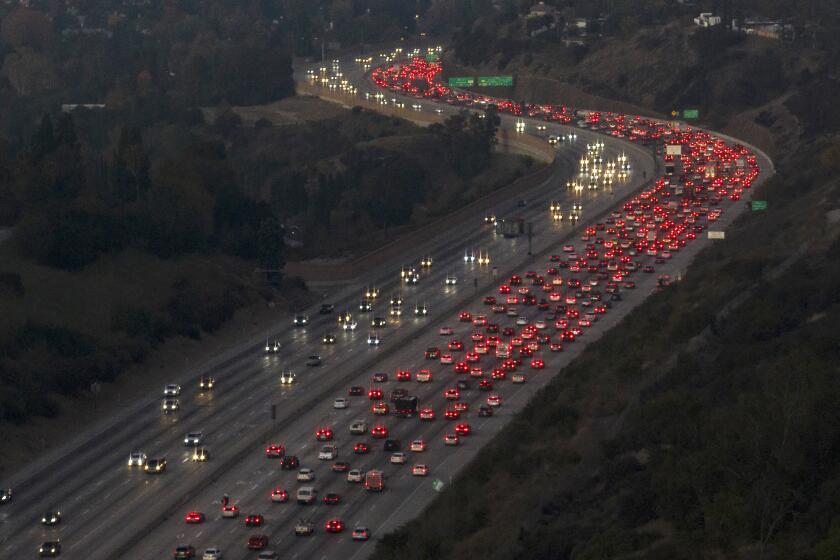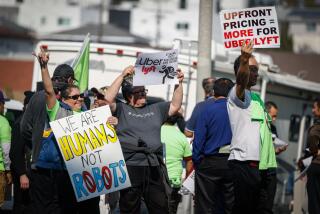Uber, Lyft risk losing customers as fares jump 7.2%, report says

- Share via
Uber Technologies Inc. and Lyft Inc. risk a drop-off in demand if rideshare prices continue to increase beyond current levels, according to a report released Tuesday.
The median price of an Uber and Lyft ride in the U.S. rose 7.2% year over year in 2024 to $15.99, according to an analysis by Gridwise Inc., an analytics app for ride-hail drivers. More than 72% of consumers said they would “reduce or stop using rideshare services if prices increased further,” the firm found through a separate survey of 1,000 consumers.
The threat of softening demand is already weighing on Uber and Lyft’s businesses. The two companies in recent weeks provided weaker-than-expected gross booking forecasts when they reported quarterly results. Both firms’ shares declined after the earnings announcements.
Although Uber attributed its muted guidance to macro and seasonal factors including currency headwinds, the recent Los Angeles fires and cold winter weather, the company has launched a lobbying effort centered on rising trip prices. It’s pouring millions of dollars into a national ad campaign to push for reforms in insurance policies that it says have been exploited by personal injury lawyers and help make rides more expensive. This in turn, Uber says, has curbed demand in key markets such as California and New Jersey.
A California law classifying Uber and other ride-hail and delivery drivers as employees rather than independent contractors is constitutional, federal court says.
Yet, the rise in fares has not translated to an equivalent raise for ride-hail drivers even as they put in more hours. Gridwise found that Uber drivers’ average weekly gross earnings fell 3.4% in 2024 from a year earlier to $513 while weekly hours increased 0.8%. Lyft drivers saw that number drop almost 14% to $318, the report found, while weekly hours dropped 5.4%.
Uber does not break down how much its ride-hail and delivery couriers in each city earn in its public filings, which an investor group has called out as a blind spot in the public’s ability to assess its ability to make money.
Uber’s 2024 results show that driver and courier earnings combined, including tips, grew about 18% on average. But tips can contribute to more than half of food delivery drivers’ income, compared with just 10% for ride-hail drivers, Gridwise’s report found. That makes Uber’s public disclosure incomparable to Gridwise’s data about driver pay.
Auto insurance rates are increasing throughout California for a number of reasons. But there are ways to cut costs on your premiums, experts say.
Uber spokesperson Ryan Thornton called Gridwise’s findings “misleading,” saying Uber’s data showed that drivers in the U.S. are “earning above $30 per hour while on a trip” on average. However, that calculation does not account for the time drivers spend on the road waiting for the app to match them with their next passenger, a factor that Gridwise includes when calculating drivers’ total working time.
Thornton said Uber could not provide comparable metrics to Gridwise’s weekly gross earnings and weekly hours data as many drivers often use multiple apps at the same time.
Still, Gridwise’s report does “help illustrate the impacts of sky-high commercial auto insurance requirements that have made the rideshare industry into a target for billboard lawyers who abuse the system for huge paydays — which the rest of us end up paying for,” he said in an emailed statement.
Gridwise’s conclusions also run counter to Lyft’s own announcement this month that it booked a record number of driver hours in 2024. When asked for comment, a Lyft spokesperson referred to Chief Executive David Risher’s remarks from the company’s fourth-quarter earnings report last week and claimed that drivers’ preference for Lyft over Uber expanded by 4 percentage points from the previous period.
Pittsburgh-based Gridwise has a namesake app that ride-hail drivers can use to track mileage and earnings. It also analyzes gig industry data for other companies.
Lung writes for Bloomberg.
More to Read
Inside the business of entertainment
The Wide Shot brings you news, analysis and insights on everything from streaming wars to production — and what it all means for the future.
You may occasionally receive promotional content from the Los Angeles Times.












